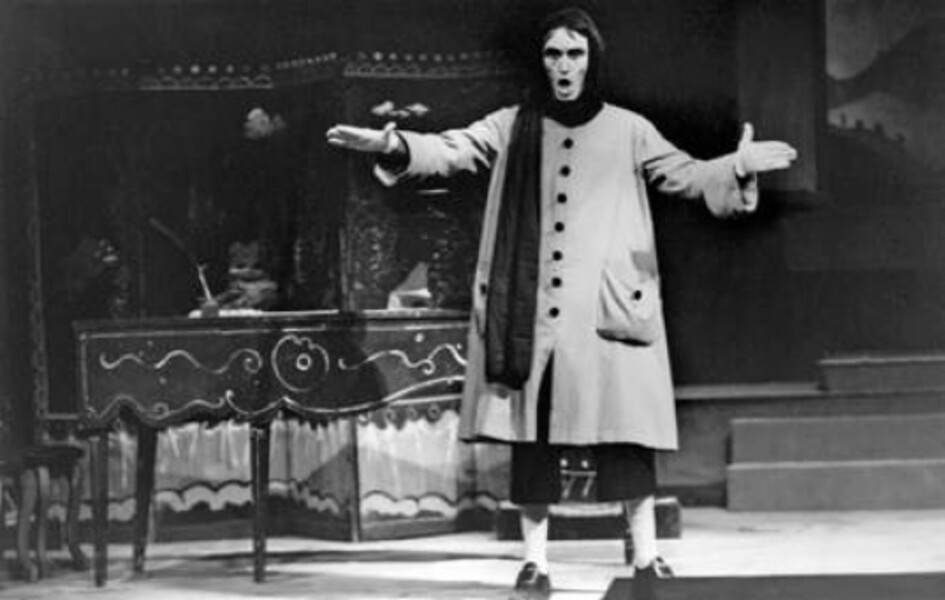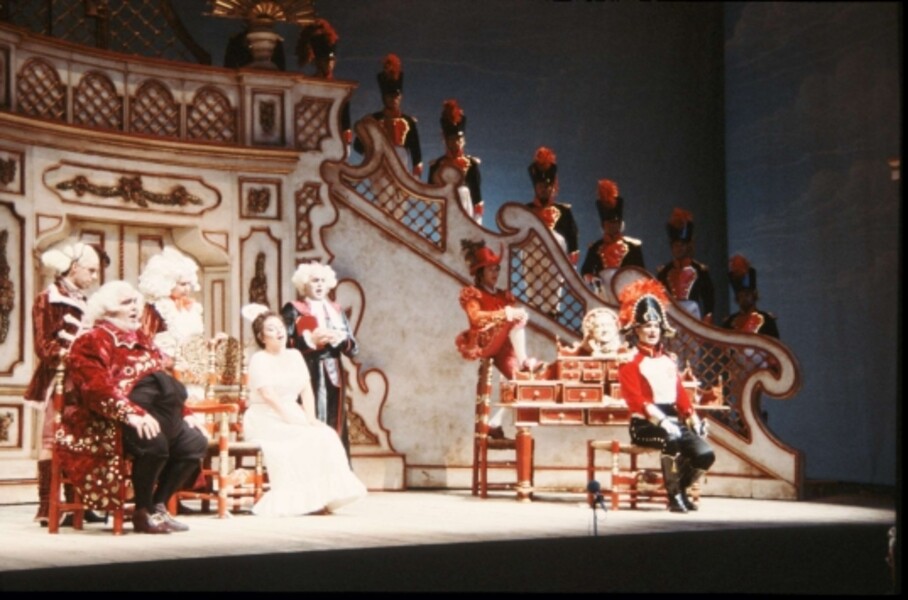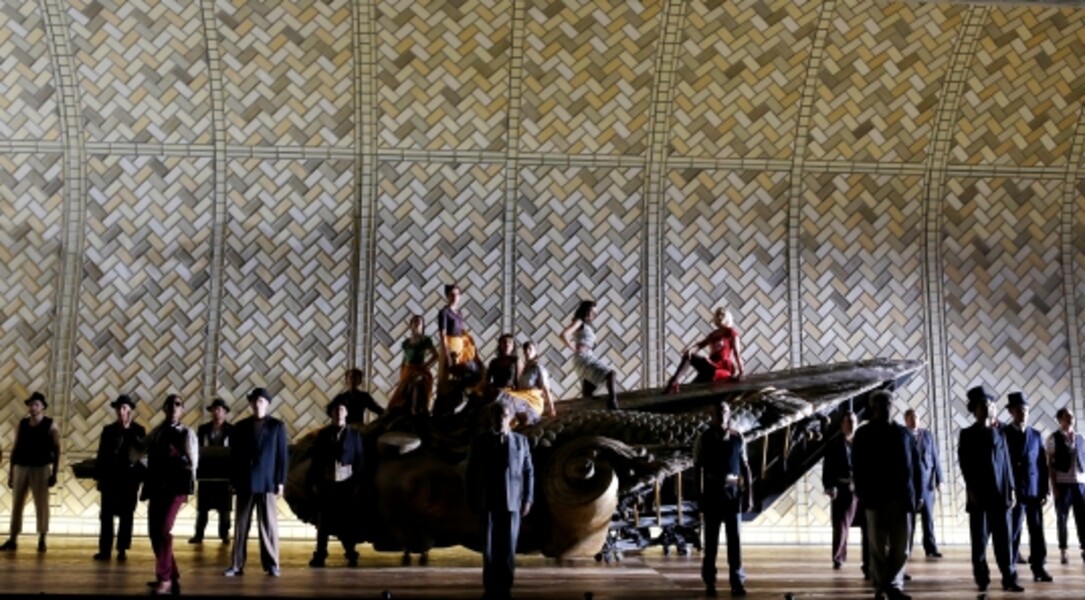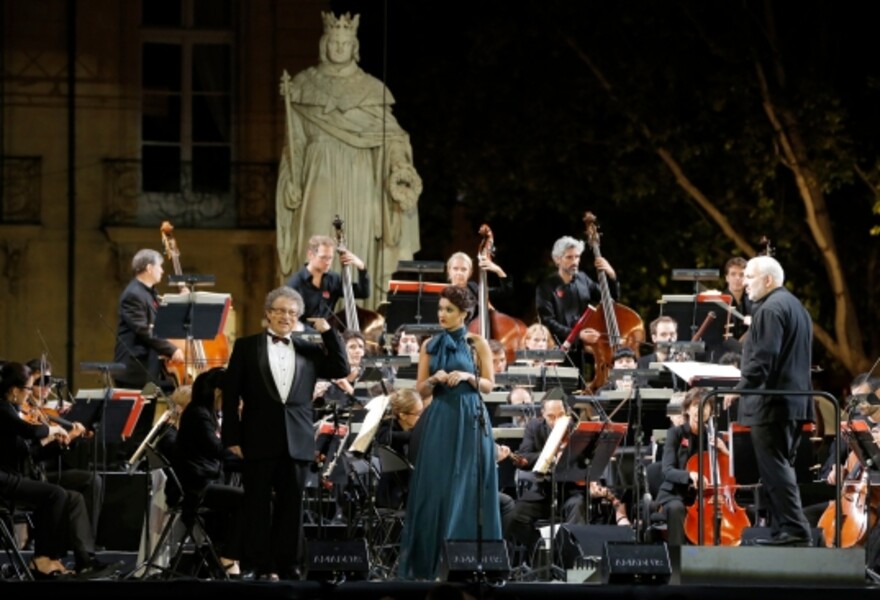THE MANY FACES OF ROSSINI AT AIX
Share
Rossini’s Moses and Pharaoh (1827) is being performed for the first time this summer at the Festival d’Aix-en-Provence. This rare work, and grand opera, corresponds to a long-standing tradition of the Festival, which has introduced and brought to life Rossini’s operas and religious music.
After the opera buffa (Il barbiere di Siviglia), the opera seria (with productions of Semiramide and Tancredi in the early 1980s), and the composer’s religious music during the 1990s, the Festival is starting a new Rossinian chapter in 2022 with Moses and Pharaoh.
IL BARBIERE DI SIVIGLIA: A SINGLE ROSSINIAN GEM IN A WORLD OF MOZART
Il barbiere di Siviglia (1816) is one of the Festival’s “founding” productions. It premiered in 1953, was reprised five times by 1969, and is deeply connected to the period during which Gabriel Dussurget served as director of the Festival. Alongside Don Giovanni, Così fan tutte and Le nozze di Figaro, Il barbiere di Siviglia completed Mozart’s operas and became part of the canon of works for the early years of the Festival.
Although it is quite different from early music and from Mozart’s oeuvre, Rossini’s opera found its place at the Festival d’Aix-en-Provence thanks to its subject matter. The libretto of Barbiere, like that of Le nozze di Figaro, is based on Beaumarchais’s plays Le Barbier de Séville (1775) and Le Mariage de Figaro (1784).
Hence, the two operas make up a diptych that justified including Barbiere, a nineteenth-century opera buffa, as part of the Festival. Critics at the time proclaimed Rossini as “the other tutelary deity of Mediterranean Aix”, and saw in his approach the same spirit and the same lightness as in Mozart’s.

Il Barbiere di Siviglia, Festival d'Aix-en-Provence 1967. Roger Soyer in the role of Basilio, in front of André Derain's harpsichord and folding screen. Fonds du Festival international d’art lyrique d’Aix-en-Provence, photographie Bouville, Ville d'Aix-en-Provence - Musée des Tapisseries.
—
At a time when Barbiere was practically the only work by Rossini being performed, the opera was appreciated for its rhythm, its lightness, and its theatricality. The sets by André Derain, the joyful staging by Maurice Sarazzin, the conducting by Italian conductor Carlo Maria Giulini (who had just been named director of La Scala in Milan the year Barbiere premiered at Aix), and the performances by Teresa Berganza, Luigi Alva, Marcello Cortis and Roger Soyer, beginning in the late 1950s, ensured its popularity.
THE FESTIVAL D’AIX AND THE “PURE PLEASURE” OF ROSSINI
At the beginning of the 1970s, another one of Rossini’s opera buffa entered the Festival repertoire: L’italiana in Algeri (1970). It was followed by Il turco in Italia (1982) and La Cenerentola (1983). These works were seen as an extension of Barbiere and were appreciated for the same aesthetic qualities: freshness, humour, and exoticism. The productions of these turquerie-themed operas were warmly received by audiences.

Matias, costumes models of L’Italiana in Algeri, Festival d'Aix-en-Provence 1970. Fonds du Festival international d’art lyrique d’Aix-en-Provence, Ville d'Aix-en-Provence - Musée des Tapisseries.
—
This repertoire has maintained a place of honour at the Festival d’Aix, and has been the subject of frequent productions up through even recent years.

Il Barbiere di Siviglia, Festival d'Aix-en-Provence 1984 (staging by Roberto de Simone, set design by de Mauro Carosi and costumes by Odette Nicoletti). At centre stage, Magali Damonte. Fonds du Festival international d’art lyrique d’Aix-en-Provence, photographie Ville d’Aix-en-Provence.
—

Il Turco in Italia, Festival d'Aix-en-Provence 2014 (staging by Christopher Alden, set design by Andrew Lieberman). Fonds du Festival international d’art lyrique d’Aix-en-Provence, photographie Pascal Victor / ArtcomPress.
—
A (RE-)PREMIERE: BRINGING NEW LIFE TO ROSSINI’S OPERA SERIA
Former opera singer Bernard Lefort took over as director of the Festival in 1974 and greatly modified the orientation of its repertoire. Following the revival of Mozart, it was now time to revive another portion of Rossini’s oeuvre: the opera seria.
The Pesaro Festival (Italy), held in Rossini’s birthplace, was founded in 1980 and aimed to restore the prestige of the composer’s entire operatic oeuvre. Yet it was at Aix-en-Provence that Rossini’s “serious” works soon found new life, with Elisabetta, regina d’Inghilterra (1975); Semiramide (1980); and Tancredi (1981).
This movement began in 1975 with a brand new production of Elisabetta, regina d’Inghilterra at the Arles Amphitheatre. Montserrat Caballé took on the title role. The production led to a recording that was long considered the definitive version, until the end of the 1990s.
In 1980 and 1981, Bernard Lefort ended his time as Festival director with two crowning achievements — and two huge successes —before assuming his new duties at the helm of the Opéra de Paris. The productions of Semiramide (staged by Pier Luigi Pizzi) and Tancredi (staged by Jean-Claude Auvray) proved that Rossini was more than just the composer of the light opera Il barbiere di Siviglia.
Their success can be attributed especially to the two pairs of singers who embodied the protagonists of these operas. Very demanding in terms of both vocal virtuosity and dramatic expression, these pairs of women performers (with mezzo-soprano Marilyn Horne playing the male characters in both productions) portrayed the painful separation of couples wrenched apart by political stakes. The brilliant execution of the arias within the innovative staging transformed these productions into great moments in the history of the Festival.
VIDEO REPORT (IN FRENCH): MONTSERRAT CABALLÉ (SEMIRAMIS) & MARYLIN HORNE (ARSACE)
Louis Erlo, the Festival director from 1982 to 1996, furthered Bernard Lefort’s momentum. In 1988, he programmed Armida, which was a more mitigated success despite its top-level cast, including the American soprano June Anderson in the role of Armida.
This summer, the grand opera Moses and Pharaoh will also feature great singers, and will pursue the Festival’s commitment to excellence when staging Rossini’s works: Michele Pertusi, Pene Pati and Jeanine De Bique will all be participating in this new production.
PERFORMING ROSSINI: FROM THE OPERA STAGE TO THE CONCERT HALL
As the 1990s were being ushered in, Rossini’s repertoire found a new place at the Festival. In 1992, the world celebrated the bicentenary of the composer’s birth. This event intensified research around his oeuvre and brought out another aspect of the musician — as a composer of religious music.
Rossini had finally lost his label as a composer of light opera, and was lauded for the rich musical diversity of his oeuvre.
Beginning in 1990, the Festival presented concerts of Messa di Gloria (1820), Stabat Mater (1842) and Petite messe solennelle (1864) at the Aix Cathedral.
In 1992, the Festival d’Aix marked the bicentenary of Rossini’s birth in its own way, by offering a tribute concert by Samuel Ramey at the Théâtre de l’Archevêché. This master of bel canto had participated in the 1980 production of Semiramide. In 1992, he sang excerpts from Barbiere, Semiramide and Tancredi — Rossini’s most noteworthy operas at the Festival.
For Parade[s] in 2014, the orchestra and soloists of the production of Il turco in Italia celebrated the composer once again, this time on the Cours Mirabeau during a large free concert.

Alessandro Corbelli and Olga Peretyatko interpret extracts from Il Turco in Italia on the cours Mirabeau, under the statue of the Roi René, on the occasion of the concert Parade[s] - Festival d'Aix-en-Provence 2014. Both are conducted by Marc Minkowski and accompanied by the Musiciens du Louvre. Fonds du Festival international d’art lyrique d’Aix-en-Provence, photographie Festival d’Aix
—
Now, in 2022, Florian Sempey and Karine Deshayes will be exploring yet another facet of Rossini at the Festival by performing a concert of art songs by the composer.
Anne Le Berre